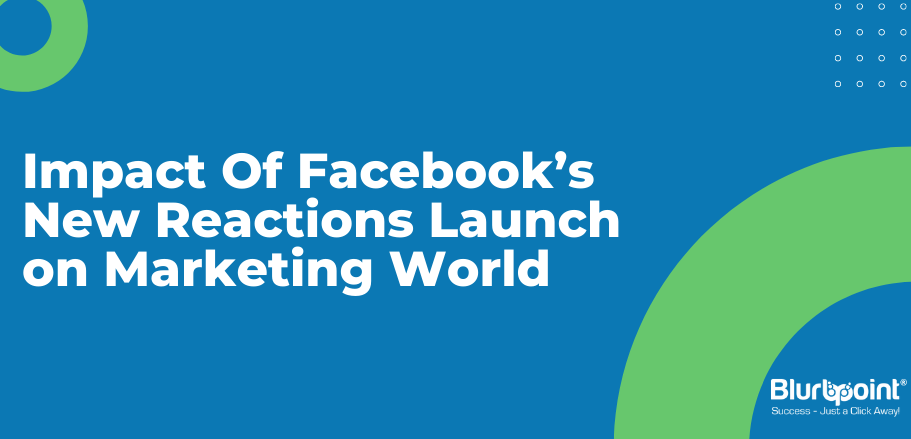GET A FREE CONSULTATION



Posted by Sanket Patel
March 23, 2016
Facebook has recently launched a new feature “Reactions” which is available to the users worldwide. This is an extension to it’s most popular Like Button. Now, you can not only Like the post but also react in one of six different emotions which are : Like, Love, Haha, Wow, Sad and Angry.
The need to blow the Like Button… Why the Change?
As it is said on various mediums, not everything in life is to be likable. Hence analyzing the requirements of people around the world like the top short comments on Facebook posts, the usefulness of Reactions worldwide, the ease to understand the reactions universally and after months of testing, Facebook was ready to launch final reactions which is an exceptional concept giving an empathetic experience to users globally.
How do the Reactions Function?
The new reactions are simple to use and readily available to everyone – there’s no need to enable the functionality. Just hover the cursor over the Like button when you want to react on the post. You’ll find six emotive icons, select an icon for the feeling you want to promote. While on mobile devices, you need to hold your finger on the like button until these six reactions appear and choose one by tapping on it.
Reactions and Facebook’s Algorithm
Although the reactions may seem simple to act, there are some subtle differences to this feature when it comes to market analysis.
According to the Facebook’s algorithm, these reactions are counted just as a ‘Like’. In other words, if you are reacting to the post with the angry emoticon, Facebook’s algorithm treats it just as it was liked when deciding where it will be placed in User’s Feed.
Why would an angry icon react the same way as the love or like reaction?
In a general study, it is found that people wish to read the posts that make them angry, just like they read the posts that make them happy. So, having a marketer’s eye, In future, Facebook can decide to choose the ranks of the posts on basis of reactions.
Global Use of Reactions
The earlier testing for a myraid emoticons was done in Spain and Ireland. But the Facebook team settled with these six reactions which were the most easily and universally accepted world wide: Like, Love, Haha, Wow, Sad and Angry.
The reactions like “yay” and “confused” were also tested but they proved to be an ambiguous situations for users.
Just as the like button, you can not remove a ‘Sad’ or ‘Angry’ reaction left on the post by any other user. And, to let you know: whether you click on the number of reactions to view all of them or each reaction on a post, the one’s that will be displayed to the user’s first are the first three reactions, unless they click other ones to see.
Deeper Insight of Facebook Reactions on Marketing World
The introduction of Facebook reactions has definitely swiveled the Facebook Market for Brands. Now, the marketers are discounted with the deeper insights of the interactions between their audiences and their content. This results to the world of testings and experimentation.
By this, marketers will require to keep a bird’s eye as to the significance of getting a like can really diminish. Let’s have a look at the impacts of the interactions between your audience and content:
> The brands can now have a look at how their content is resonating to the audience and can use the data to perform specific actions.
> The reactions will give the marketers a new feedback jumps from their audience.
> Facebook users who may not wish to like may now send specific emotions about your content.
> People who may not comment on their phones may now react easily.
Besides, there are some ideas on how marketers would gain deeper insights into their audience with the facebook reactions:
Perform a test to know whether certain types of reactions do well with your posts:
See whether the posts getting more “love” are performing better with your audience or the ones getting more “angry” are shared by the users. You can do this test by running a campaign at your Insights page and assess the views, clicks and shares for a particular post.
Negative Emotions Should Not Be Discussed
It was noticed in the past that people commented on a post creating a negative effect for a user. Now, people who experience a negative emotion for your post will react fast with the reactions instead of posting a comment. This may help you discover an impact of user behaviour and customer feedback for your posts on the basis of their reactions.
At the end, any reaction from your audience would be better than no reaction. As facebook continues to grow, we may see additional algorithms and faces and to let us keep growing audience and know them better, we, the marketers need to stay updated, create better content and respect our followers.